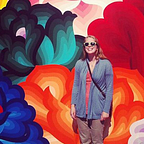Designing for Real Feelings in a Virtual Reality
VR is especially suited to tapping into our emotions, and creators are getting better at designing for it
I’m standing in the middle of a frozen lake when an animated white rabbit approaches me. She looks me in the eye and crouches, ready to play. I crouch too.
The scene takes place inside Invasion, an interactive virtual reality film developed by California-based Baobab Studios. It’s not the climax of the film (that comes later, when a pair of aliens arrive), but it’s one of the most illustrative.
Virtual reality, it turns out, is excellent at playing into our emotions. We watch movies when we want to laugh or cry and play video games when we want to feel excited. But virtual reality has an extra ingredient: the feeling that the viewer is really there participating in the scene. I crouched because it’s what I felt the rabbit expected of me. There was an overwhelming urge to mirror her — to participate.
Virtual reality is still a new medium, but VR artists and developers are gradually learning how to design experiences around what extracts the largest response from a viewer. Stepping into a virtual world can be intimate, and combining that with design choices that heighten emotions makes for a memorable experience…
